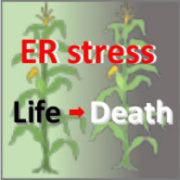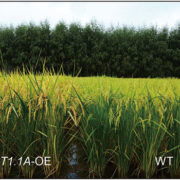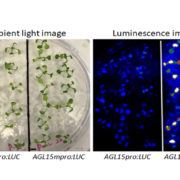
Plant Scientist Highlight: Maria Harrison
Blog, Careers, Profiles of Plant ScientistsWhy did you originally decide to pursue science and what got you interested particularly in arbuscular mycorrhizal fungi?
I was always interested in science – biology and chemistry were my favorite subjects at school and I was fascinated by microbes and parasites. Also with microscopes and the possibility…

Plant scientists use big data to map stress responses in corn
Blog, The Plant Cell, The Plant Cell: NewsIowa State University
AMES, Iowa – Plant scientists at Iowa State University have completed a new study that describes the genetic pathways at work when corn plants respond to stress brought on by heat, a step that could lead to crops better capable of withstanding stress.
The findings, published…

Spring into a New Career- May 30, 2018
Blog, Careers, Careers - Blog
Recent Job Posts:
Assistant Professor of Plant Pathology, University of California, Davis CA, USA
Professor/Associate Professor/Assistant Professor (Plant Molecular Biology and Crop Improvement), Hong Kong Baptist University, Hong Kong, China
Post Doctoral Research Associate…

ONE GENE: DIFFERENT mRNAs, DIFFERENT TISSUES, DIFFERENT FUNCTIONS IN DEVELOPMENT
Research, The Plant Cell, The Plant Cell: In a NutshellNapoli et al. show that mRNA splicing variants have tissue- and developmental stage-specific activity in flower development https://doi.org/10.1105/tpc.17.00840.
By Roberta Ghelli and Patrizia Brunetti
Background: Plants that are self-pollinating contain both male (stamen) and female (pistil)…

Pathogenic Bacteria Use A “Self-Eating” Process to Trick Plants
Research, The Plant Cell, The Plant Cell: In a NutshellÜstün et al. show that pathogenic Pseudomonas enhances the autophagic turnover of proteins in Arabidopsis https://doi.org/10.1105/tpc.17.00815.
By Suayib Üstün and Daniel Hofius
Background: Autophagy and the proteasome are the major pathways for protein degradation in eukaryotes. While the…

Developing High-Yield Early-Maturation Crops by Manipulating Nitrogen Utilization
Research, The Plant Cell, The Plant Cell: In a NutshellWang et al. investigate the function of OsNRT1.1A in rice. Plant Cell (2018). https://doi.org/10.1105/tpc.17.00809.
By Wei Wang, Bin Hu and Chengcai Chu
Background: To cope with an increasing global population and decreasing availability of arable land, improving crop yield is a major agricultural…

Clathrin-Mediated Endocytosis: Plant Homologs of the Clathrin Uncoating Factor Auxilin
Research, The Plant Cell, The Plant Cell: In a NutshellAdamowski et al. use CRISPR to investigate the function of plant auxilin proteins https://doi.org/10.1105/tpc.17.00785.
By Maciek Adamowski
Background: Endocytosis is one of the basic pathways of cellular trafficking. By endocytosis, proteins located in the plasma membranes, for instance receptors,…

Switching off Seed Maturation Genes in Seedlings
Research, The Plant Cell, The Plant Cell: In a NutshellChen et al identify AGL15 as a direct target of HSI2-dependent transcriptional repression in Arabidopsis seedlings https://doi.org/10.1105/tpc.17.00655.
By Naichong Chen and Randy Allen
Background: The developmental transition from seeds to seedlings is a critical step in the plant life cycle.…

Update: Cation/H+ transporters affect membrane trafficking
Plant Physiology, Plant Physiology: UpdatesBy Heven Sze and Salil Chanroj.
Plants remodel their cells through the dynamic endomembrane system. Intracellular pH is important for membrane trafficking, but the determinants of pH homeostasis are poorly defined in plants. Electrogenic proton (H+) pumps depend on counter-ion fluxes to establish…

